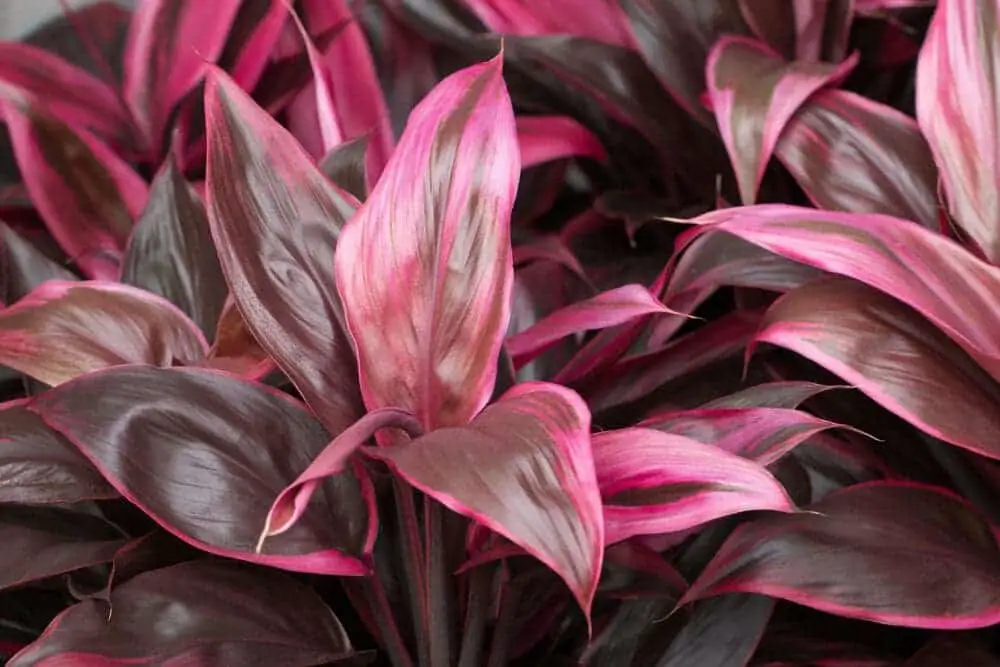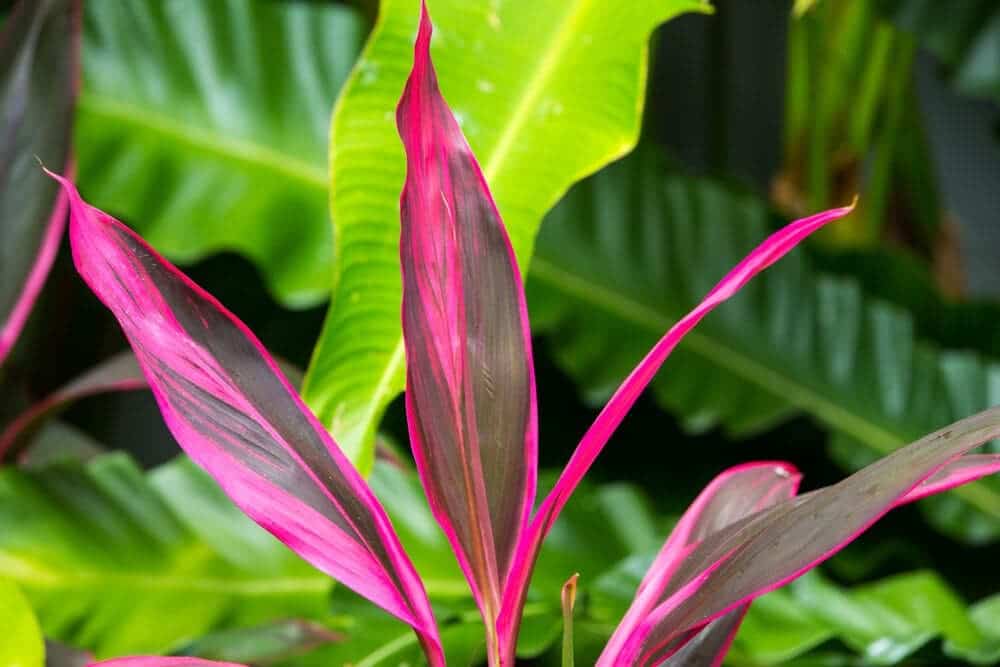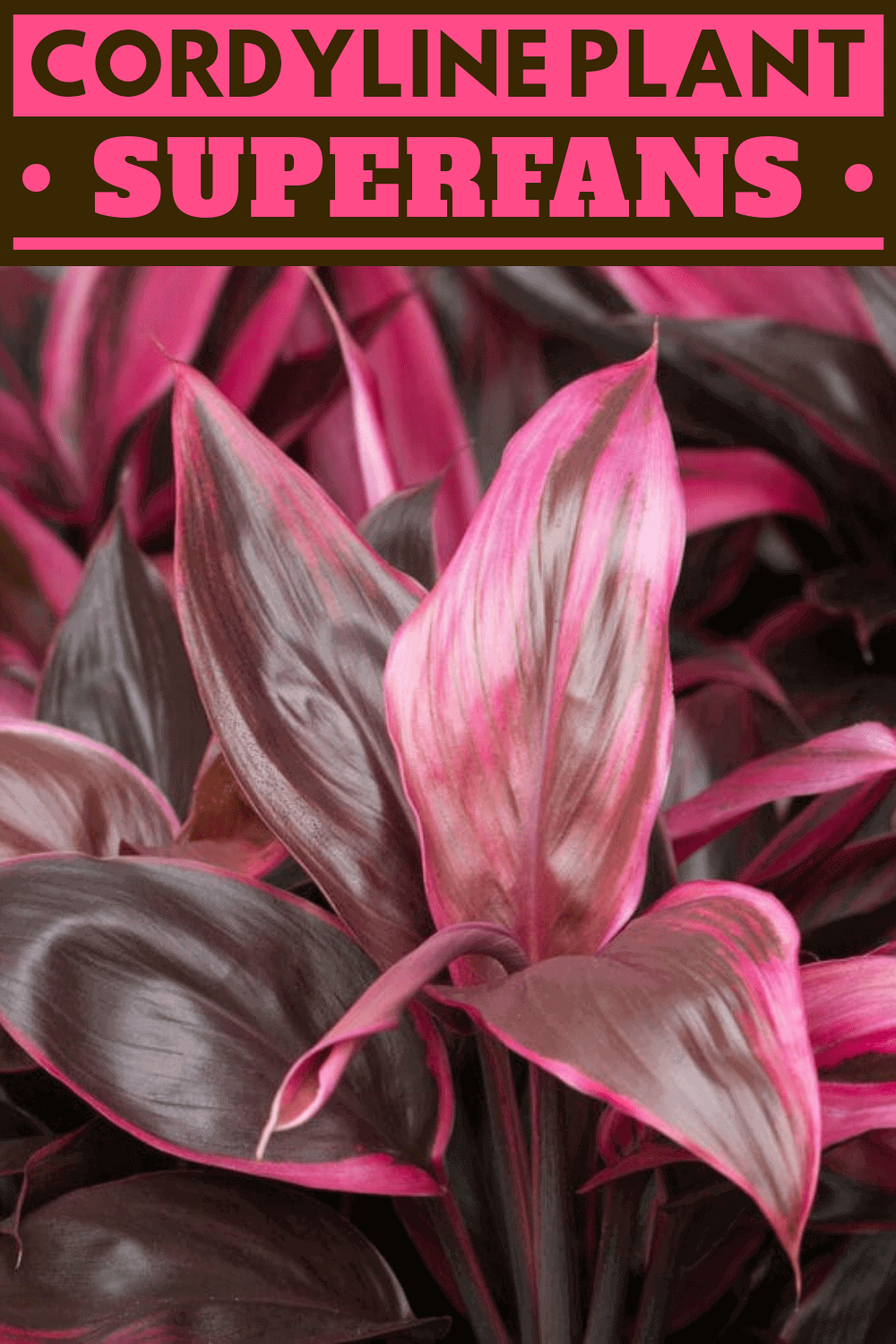One of a kind plants don’t come around that often, but you can be sure that the Cordyline Plant is one of them!
Its leaves have a unique color that makes it stand out from all the other plants with their dull green leaves. The flowers of this plant may not look very nice, but they do give off a pleasant scent.
Cordyline Plant Care & Growing Guide
1. Light Requirements
This plant can survive on partial shade and indirect light. But if you want the leaves to have great coloring, then it must be exposed to at least eight hours of full sun. The longer it is in the sun, the more vibrant the red leaves will be. Full sunshine also helps the plant grow. Plants under partial shade will be smaller. If this plant is indoors, leave it by a large window that gets a lot of indirect light or wherever the sun’s rays come through.
2. Water
The cordyline plant grows best in areas with a lot of rainfall. If it doesn’t rain in a week, it must be soaked with at least 1 inch of water. Make sure it is watered enough so that the soil stays moist. However, if it is overwatered, its roots can become waterlogged.
3. Soil
For this plant to thrive, the soil should be about 6 to 6.5 pH. The ground must also be stable because the wind could cause this plant to fall over if the soil is weak. The soil must drain well and quickly to prevent root rot. Occasionally you must add fertilizer to the ground. Add fertilizer directly into the soil.
4. Temperature and Climate
Since it originates from Southeast Asia, this plant loves to be in warm areas with a lot of humidity. Although it can handle a range of temperatures, it does best above 62 degrees. If it is in a container, it can be outside during the summer and fall. Do not bring indoor plants out until the first frost is over. The ideal place in the home is in the shower room because it has a lot of light and humidity. The hardiness zones it does best in is 10 to 12.

5. Repotting
Unless you have to repot the plant because of a disease, always wait until the roots are coming out of the drainage holes. When you transfer it into the next container, make sure the container is not much bigger than the first one. You can use a completely new batch of soil, or you can add some old soil to the new pot.
6. Speed of Growth
On average, the cordyline plant grows about 3 to 5 ft in around five years. Several factors influence how much it develops, like the amount of sun, how often it is watered, and how regularly it was fertilized.
7. Height and width of the plant
This plant was meant to reach the sky! In the right conditions, it can grow up to 10 ft tall. But on average, people keep this plant at around 3 to 4 ft, especially if it is indoors. The width of the plant usually reaches about four to six inches, which makes this plant look leggy and tall.
8. Trimming
If the cordyline plant is left unattended and never trimmed, its stems and leaves can become quite leggy and fall over. People tend to trim this plant and keep it at three to four feet. If you want it to be taller, you should add a support stake for the leaves to wrap itself around.
Is the Cordyline Plant Poisonous?
This plant is not toxic to humans. If you cook the stems and leaves, it can be eaten and added to recipes. However, it is toxic to dogs. If your dog bites off a leaf, they will experience drooling, lack of appetite, and vomiting. The plant should not be grown in water. If its roots become too wet, they will be waterlogged, and the plant will die.
Can Cordyline Plant grow in water?
No, this plant should not be grown in water. If its roots become too wet, they will be waterlogged, and the plant will die.

Does the Cordyline plant have flowers and how to get it to flower?
Yes, the cordyline plant does produce flowers. They are half an inch wide and that they usually grow in clusters of about a foot. It depends on the species, but the flowers can be pink or yellow or red or lavender.
If you want the flowers to bloom, keep the plant moist and the air around it humid. It tends to bloom in early summer. After it blooms, it will also produce berries.
Also read: Are Rubber Plants Toxic to Cats? Will My Cat Eat Them?
Common Cordyline Diseases
Fluoride poisoning occurs in plants that are watered by conventional means like a hose. The symptoms of fluoride poisoning are extreme leaf die off because it kills the cells inside the stems.
Phytophthora leaf spot causes small white lesions on the bottom leaves and base of the plant if they are waterlogged. The leaves and stems turn completely dark brown, and the roots die. Spray sulfur or copper fungicide to prevent the fungus spores from germinating. Do this at the first sign of leaf spot.
Root rot is the most common disease of the cordyline plant. It occurs when the soil does not drain well, and the roots drown in water. To fight it, stop watering the plant until the soil is completely dried out. Apply neem oil to the soil as well.
Keep reading:
Conclusion
- This plant is a relative of the asparagus.
- It is originally from Southeast Asia or the Hawaiian Islands.
- Depending on the amount of sun it can get, it can grow up to 10 ft tall.
- If the soil is deficient in nutrients, it will still grow. But you can add fertilizer to the soil to improve its nutrition.
- The more sunlight it receives, the redder its leaves will be.
- The hardiness zone for this plant is 10 through 12
- The ground around it should be kept moist. It needs to receive at least an inch of water a week.

Victoria is the owner and main author of hobby plants. She loves spending her free time in her garden planting and taking care of her plants. Victoria hopes you enjoy the content here!
![Mother Of Thousands Plant [Complete Plant Care Guide] Mother Of Thousands Plant [Complete Plant Care Guide]](https://www.hobbyplants.com/wp-content/uploads/2022/07/mother-of-thousands-plant-300x158.jpg)
![Majesty Palm Plant Care: [Complete Beginner's Guide] Majesty Palm Plant Care: [Complete Beginner's Guide]](https://www.hobbyplants.com/wp-content/uploads/2022/08/majesty-palm-care-300x158.jpg)
![Exotic Angel Plant Care: [Complete Beginner's Guide] Exotic Angel Plant Care: [Complete Beginner's Guide]](https://www.hobbyplants.com/wp-content/uploads/2022/08/exotic-angel-plant-care-300x158.jpg)
![Snow White Waffle Plant: [Complete Care Guide] Snow White Waffle Plant: [Complete Care Guide]](https://www.hobbyplants.com/wp-content/uploads/2022/08/snow-white-waffle-plant-300x158.jpg)
![Waffle Plant Care: [Complete Beginner's Guide] Waffle Plant Care: [Complete Beginner's Guide]](https://www.hobbyplants.com/wp-content/uploads/2022/08/waffle-plant-300x158.jpg)
![Bird Of Paradise Plant Care: [Complete Beginner's Guide] Bird Of Paradise Plant Care: [Complete Beginner's Guide]](https://www.hobbyplants.com/wp-content/uploads/2022/08/bird-of-paradise-plant-300x158.jpg)
![Purple Passion Plant Care: [Complete Beginner's Guide] Purple Passion Plant Care: [Complete Beginner's Guide]](https://www.hobbyplants.com/wp-content/uploads/2022/08/purple-passion-plant-care-300x158.jpg)
![China Doll Plant Care: [Complete Beginner's Guide] China Doll Plant Care: [Complete Beginner's Guide]](https://www.hobbyplants.com/wp-content/uploads/2022/09/china-doll-plant-care-300x158.jpg)
![Polka Dot Plant Care: [Complete Beginner's Guide] Polka Dot Plant Care: [Complete Beginner's Guide]](https://www.hobbyplants.com/wp-content/uploads/2022/09/polka-dot-plant-300x158.jpg)
![Mona Lisa Lipstick Plant Care: [Complete Beginner's Guide] Mona Lisa Lipstick Plant Care: [Complete Beginner's Guide]](https://www.hobbyplants.com/wp-content/uploads/2022/09/lipstick-plant-mona-lisa-300x158.jpg)
![Yucca Cane Plant Care: [Complete Beginner's Guide] Yucca Cane Plant Care: [Complete Beginner's Guide]](https://www.hobbyplants.com/wp-content/uploads/2022/09/yucca-cane-plant-care-300x158.jpg)
![Bush On Fire Croton Plant Care: [Complete Beginner's Guide] Bush On Fire Croton Plant Care: [Complete Beginner's Guide]](https://www.hobbyplants.com/wp-content/uploads/2022/09/bush-on-fire-croton-300x158.jpg)